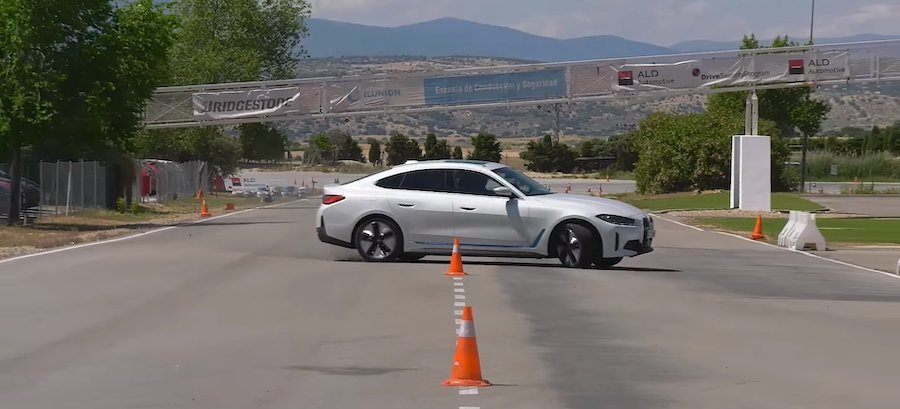BMW i4 Is A Lively But Slow Participant In The Moose Test

The all-electric BMW i4 is new to the world, though its shape is familiar. The current generation 4 Series coupe debuted for 2020, but we haven't seen a model take on the emergency lane-change maneuver affectionately called the moose test. After watching the i4's wayward motions in both lane-change and slalom tests, we're quite interested in seeing how a combustion-powered 4 Series responds.
We say that because the i4 didn't pass with flying colors. The target speed for the moose test is 77 km/h, or 48 mph. At that speed, the i4 driver experienced some significant oversteer on the second and third maneuvers, wiping out several cones in the process. The driver kept control of the car, but the stability control intervened to help keep things in check. And contact with cones represents some measure of real-world contact, so the first run is a definite fail.
In fact, 73 km/h (45 mph) was the best speed achieved with a clean run through the course. Curiously, subsequent tests at higher speeds didn't produce the same oversteer condition as that initial run. Instead, understeer was the order of the day as the BMW pushed through the course, hitting cones and failing to make the final maneuver on one attempt. The video states the tires were quite warm at that point, and that the car didn't have any M package for handling. The suspension was described as soft, but at a slower speed, reactions were predictable.
In addition to the moose test, the i4 also tackled a slalom course. Once again, lively is the word as the car exhibited a tendency to get tail happy at times. The video even states the driver must be cautious and on alert with throttle and braking, and that comes to life in dramatic fashion on the second slalom attempt. The i4's backside steps out, and this time there's no correcting it. The car spins off the course, hitting plastic barriers on the side.
This particular i4 is a rear-wheel drive eDrive40 model, utilizing a single electric motor at the back that generates 340 horsepower (245 kilowatts). It's obviously a completely different arrangement versus the 4 Series, offering a choice of boosted four-cylinder or inline-six power in the front.
Related News
